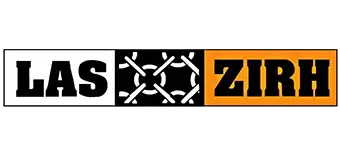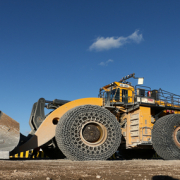The Essential Guide to OTR Tire Chain Selection: Equipment, Application, and Beyond
Selecting the right tire chains for Off-The-Road (OTR) tires is crucial for optimizing equipment performance and safety in demanding environments. Whether operating in mining, quarrying, or hot slag applications, the correct tire chain selection can significantly extend tire life, reduce downtime, and enhance operational efficiency. This guide will walk you through the essential factors to consider, from understanding your equipment’s needs to matching tire chains. With specific applications, ensure you make informed decisions that protect your investment and keep your operations running smoothly.
Understanding OTR Tire Chains: The Basics
OTR tire chains, also known as tire protection chains, are heavy-duty metal structures designed to encase OTR tires. They provide additional traction and protection, enabling vehicles to navigate challenging terrain like snow, ice, mud, rocks, and other loose surfaces. The chains’ unique design digs into the ground, enhancing grip and preventing slippage.
Why Tire Chain Selection Matters
Choosing the right OTR tire chains is not merely a matter of preference; it directly impacts your operations’ efficiency, safety, and profitability. The wrong chains can reduce traction, premature wear and tear, and even equipment damage. Conversely, the right chains can significantly improve productivity, extend tire life, and enhance safety.

Factors Influencing Tire Chain Selection
Several factors come into play when selecting OTR tire chains. Understanding these factors will enable you to make informed decisions aligning with your needs.
Equipment Type and Application
The type of equipment you use and its specific application plays a crucial role in tire chain selection. Different machines have varying tire sizes, tread patterns, and operational requirements. For instance, a loader used in a quarry will need different chains than a dump truck operating in a mine.
Terrain and Weather Conditions
The terrain and weather conditions your equipment encounters significantly impact chain selection. Chains designed for snow and ice will differ from those intended for mud, rocks, or hot slag. Understanding your operating environment is essential for choosing chains that offer optimal traction and protection.
Tire Size and Tread Pattern
Tire dimensions and tread design also influence chain selection. Chains must fit snugly over the tire without interfering with its movement or causing damage. Moreover, the tread pattern can affect the chain’s ability to self-clean and maintain traction.
Chain Type and Material
Various chain types and materials are available, each with its own strengths and weaknesses. Common chain types include ladder chains, square link chains, and studded chains. Materials range from steel to alloy, offering varying levels of durability and wear resistance.
Navigating OTR Tire Chain Applications: Industry-Specific Insights
Each industry and application presents unique challenges that influence tire chain selection. Let’s delve into some specific examples.
Mining
Mining operations involve a wide range of equipment and challenging terrain. From excavators and loaders to haul trucks and dozers, each machine requires specific chain configurations to maximize performance and safety. In underground mining, where space is limited and ventilation is critical, low-profile chains may be necessary.
Quarrying
Quarries often feature loose rock, gravel, and uneven surfaces. Tire chains for quarrying equipment must offer excellent traction and self-cleaning properties to prevent clogging and maintain productivity. Chains with aggressive tread patterns and hardened components are typically preferred in this environment.
Hot Slag
Handling hot slag requires specialized tire chains that can withstand extreme temperatures without compromising performance. Heat-resistant alloy chains with reinforced links are ideal for this application. They provide the necessary protection and traction while minimizing the risk of chain failure due to heat exposure.
Scrap
Scrap yards present a unique challenge due to the presence of sharp metal objects. Tire chains for scrap handling equipment must be robust and puncture-resistant. Chains with hardened steel components and reinforced links offer the necessary durability to withstand the harsh environment.

Underground Mining
Underground mining operations often involve confined spaces and low visibility. Tire chains for underground equipment must be compact and maneuverable while still providing adequate traction. Low-profile chains with a smooth tread pattern are often preferred in this setting.
Choosing the Right Chains: Expert Tips
Selecting the appropriate OTR tire chains involves careful consideration of several factors. Here are some expert tips to guide your decision-making process.
Consult with Tire Chain Specialists
Tire chain specialists possess in-depth knowledge of various chain types, materials, and applications. They can assess your specific needs and recommend the most suitable chains for your equipment and operating environment. Don’t hesitate to seek their expertise to ensure you make informed choices.
Consider the Total Cost of Ownership
While the initial cost of tire chains is a factor, it’s essential to consider the total cost of ownership. Higher-quality chains may have a higher upfront cost but offer superior durability, longevity, and performance, ultimately saving you money in the long run.
Prioritize Safety
Safety should always be a top priority when selecting OTR tire chains. Choose chains that meet or exceed industry safety standards and provide adequate traction and protection for your operators and equipment. Remember, investing in safety is an investment in your business’s future.
Think Long-Term
OTR tire chains are a significant investment. Therefore, it’s crucial to think long-term when making your selection. Choose chains that offer durability, longevity, and adaptability to changing conditions. This will ensure you get the most out of your investment and minimize downtime due to chain failure or replacement.
Regular Inspection and Maintenance
Proper inspection and maintenance are essential for maximizing the lifespan and performance of your OTR tire chains. Regularly check for wear and tear, loose links, or any signs of damage. Address any issues promptly to prevent further deterioration and ensure optimal functionality.
Conclusion: Making Informed Tire Chain Selection Decisions
OTR tire chain selection is a critical process that directly impacts your operations’ efficiency, safety, and profitability. By understanding the factors influencing chain selection, considering industry-specific applications, and following expert tips, you can confidently choose the right chains for your equipment and operating environment. Remember, investing in high-quality tire chains is an investment in your business’s success.
Remember: Always prioritize safety, consult with specialists, and think long-term when making your tire chain selection decisions. By doing so, you’ll ensure your equipment operates at its peak performance, maximizing productivity and minimizing downtime.
Additional Tips for Effective Tire Chain Selection
- Match chains to tire size and tread pattern: Ensure the chains fit snugly and don’t interfere with tire movement.
- Consider chain tensioning systems: These systems help maintain proper chain tension, preventing slippage and premature wear.
- Choose chains with self-cleaning properties: This is especially important in muddy or snowy conditions.
- Inspect chains regularly for wear and damage: Replace worn or damaged chains promptly to avoid safety hazards.
- Store chains properly when not in use: This will help prevent rust and corrosion.
- By following these tips and guidelines, you can confidently navigate the complexities of OTR tire chain selection and ensure your equipment operates at its best in any environment.












